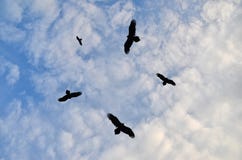

Smaller murmurations occur when feeding groups forage. Murmurations occur more often at dusk, when birds are looking for roosts to congregate for the evening. Feral or rock pigeons, shorebirds and robins also move in similar patterns. Massive flocks of European starlings and blackbirds are perhaps the best examples of murmurations that we may see in Alberta. Suddenly all ten plunged their enormous bills into the water, ingesting minnows by the dozen.Ī term used by birders to describe large flocks that fly in a tight formation, often in complex patterns in order to avoid predators, is a murmuration. Starting somewhat distant from one another these 10 pelicans formed an ever shrinking circle. A unique experience I was fortunate to witness in French Bay in 2014 was a flock of white pelicans in hunting formation.

A second explanation is that birds work cooperatively when hunting, where it may be advantageous in catching prey. One idea is that when flying in a flock, predators may see the giant flock as one organism, making it difficult to target one victim from the flock. More recently a fourth rule has become accepted: Avoidance, where birds can move out of the way of obstacles or predators.īased on this foundation, scientists have proposed a few reasons as why birds flock. Rule One is collision avoidance with nearby flock mates Rule Two is velocity matching, where each bird tries to match the speed of neighboring birds and Rule Three is flock centering, whereby birds try to stay centred between neighboring birds. In applying Boids to flocking birds, three rules were identified that individual birds follow with reference only to their direct neighbors. In 1986, artificial life and computer graphics expert Craig Reynolds created “Boids,” a life simulation program. How and why birds flock was indeed a mystery. Imagine watching flocks of this size, moving in unison, seemingly with no evident leader, all heading in the same direction. In 1964, the largest flock of a single species of birds ever seen in North America was a flock of 40 million red-winged blackbirds in Arkansas. Thinking globally, the largest documented flock of birds witnessed by humans was in Africa, where approximately 1.5 billion red-billed quelea, sometimes called “Africa’s feathered locust”, were seen in flight. At times we will tell of when the skies darken with massive flocks of migratory birds. Most people are more likely to notice a flock of birds, ducks, or geese than a single bird. Mysteries in nature stimulate one’s curiosity.


 0 kommentar(er)
0 kommentar(er)
